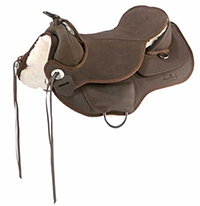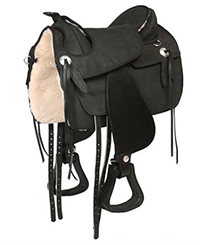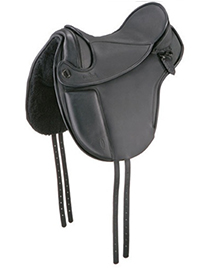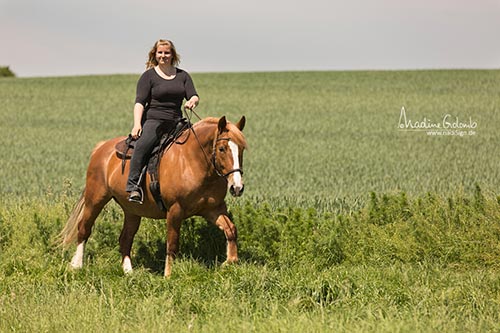
There are so many saddles in this world, where does one begin? Saddle trees were traditionally made of wood, which is why it’s called a tree. Today, treed saddles are made out of various materials. Saddle trees can be made with wood reinforced with spring steel, wood combined with other metals or rawhide, fiberglass, synthetic polyethylene, and even plastic. Treeless saddles are often made with leather, foam, fiberglass, felt and other materials to create panels for spine protection and a stiff pommel for wither protection. The decision to choose a treed or treeless saddle is most often based on what works best for your horse.
Barefoot Saddles USA has been selling a variety of treed and treeless saddles for years, and through our experience with success and failures we have developed certain guidelines to determine whether a treeless saddle might be good for you.
First, let us state clearly that treeless saddles are not for everyone. However, when they do work it can be a great experience.
Here are a few reasons why a treeless saddle might be a good choice for you and your horse:
• You have a low withered, wide horse, or other challenging conformation issues, and every treed saddle you have tried digs into your horse’s shoulder or creates a sore back.
• You have a big moving or gaited horse that is restricted by the tree of a treed saddle.
• You love to ride bareback and the close contact feel, but want more security that a saddle can provide.
• You are a competent rider and feel a treed saddle is too bulky under you.
• You want a lighter weight saddle.
• You have a young horse that is developing and changing shape.
• You want to use a saddle on more than one horse.
• You love the idea of being in closer contact with your horse and are willing to take the time to make the adjustments necessary to get comfortable riding in a treeless saddle.



Here are some reasons why a treeless saddle might not work for you:
• You are a heavy weight rider on a small/medium horse.
• Your horse has prominent withers and an exposed spine. This type of conformation can be difficult to achieve proper wither clearance and spinal clearance on horses with a treeless saddle.
• You require a lot of security in the saddle. A treed saddle with knee rolls, poleys, a pommel and horn are going to provide more security than a treeless saddle.
There are treeless saddles with deep seats, knee rolls, and a horn, but compared to a treed saddle with the same design, the treed saddle will most likely feel more secure.
• You cannot rope cattle or dally a horse on the horn of a treeless saddle.
• Mounting from the ground is important to you. Treeless saddles on some horses will slip when you mount from the ground. This is most often a problem on really round horses. (However there are some mounting aids that help with saddle slip)
• You stand in your stirrups a lot or like to jump. A treeless saddle cannot provide the support under the stirrup area that a treed saddle can. This also depends somewhat on your weight.

Is there a weight limit to a treeless saddle? Generally speaking, the weight limit is around 170 lbs, but keep in mind, there are plenty of exceptions. Depending on the size of your horse, it is certainly possible to go over that limit. Riders who weigh above 170 lbs have ridden successfully in treeless saddles, but usually are on bigger, stout horses that can carry their weight with relative ease.
You can also increase that 170 lb weight limit with a proper saddle pad using a combination of open and closed cell foam inserts or other materials. The weight limit is also influenced by the position and skill of the rider, as that effects how the pressure from the rider is influencing the back of the horse.
The US Cavalry came up with a useful guideline for how much weight a horse can carry without stress. According to them, the weight of the rider and his tack should equal approximately 20% of the weight of the horse. So, if your horse weighs 1000 lbs, both you and your tack should weigh approximately 200 lbs or less. This is only a guideline and there are exceptions of course, but this 20% figure has been backed up by recent stress testing.
In conclusion, we know that in the world of horses there are no hard and fast rules for fitting a living, breathing animal with an inanimate object on his back. We recognize there is a need for treed and treeless saddles, as the variables and needs of horses and riders are infinite.
BarefootSaddlesUSA.com, the US importer of Barefoot Treeless Saddles from Germany, is loaded with useful information about treeless saddles. We offer a saddle demo program so you can try one out to see if it is indeed the right saddle for you and your horse.
Visit our section on English & Western Tack to find out more about BarefootSaddlesUSA.
































